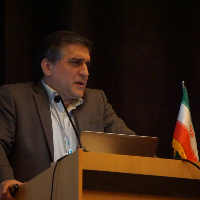Comparative Analysis of Logit-Based Stochastic Traffic Assignment Models
After applying the logit model as a route choice model in early stochastic traffic assignment algorithms, other models have been developed to overcome its theoretical weakness in considering path overlap. These models maintain the closed-form and computational convenience of logit, while not requiring simulation and computational efforts of probit. The purpose of this paper is to evaluate the most important of these models in comparison with each other. The models under consideration are Multinomial-logit (MNL) model, two modified MNL models called C-logit and PS-logit, and two models from the generalized extreme value family called cross-nested logit (CNL) and Paired-Combinatorial logit (PCL). These comparisons were performed at different levels of network congestion (origin-destination demand) and different values of perception variance of network users (scaling parameter) and were also compared with results of deterministic traffic assignment. Results of a nine-node and the Nguyen network show that as the congestion level increases, general patterns of link flows of stochastic assignments approach the deterministic assignment link flows; While the difference of these link flows in four models that consider the effect of path overlap increases compared to MNL model. Also, as the variance of user perceptions increases, the difference of link flows of stochastic assignments relative to the MNL model and relative to the deterministic assignment increases. Besides, results of the studied models for the Sioux-falls network show that path flows in stochastic assignments have much more entropy than the deterministic assignment, and therefore stochastic models produce more probable answers in this regard.
-
A Prediction of Vehicles Entering The Traffic Cordons, Using Machine Learning (Case: Tehran City)
Mahmoudreza Nateghi, Sepideh Shami, Amirreza Mamdoohi *
Road journal, -
Scenario creation of Shared Autonomous Vehicles Penetration Rate, a Quantitative Environmental Analysis
A. R. Mamdoohi *, A. Rahmani
Sharif Journal Civil Engineering,


